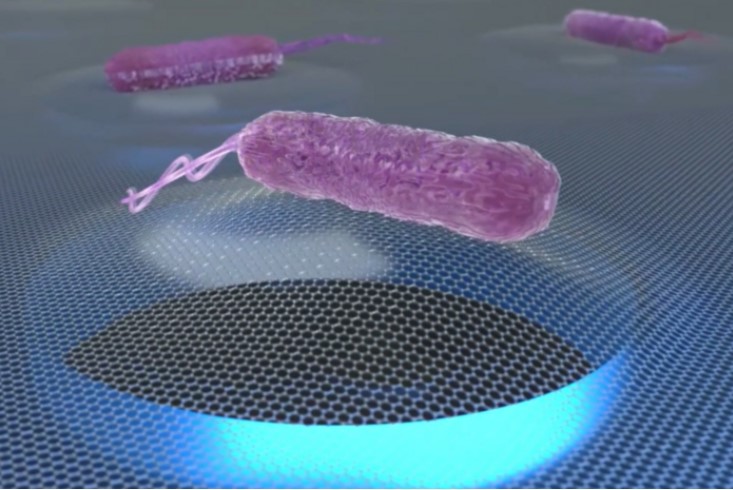Joint development graphene based antibiotic sensitivity test with SoundCell
ANL delivers ultrathin bilayer graphene to detect nanoscale forces
We are extremely proud to communicate the joint development of a groundbreaking graphene based antibiotic sensitivity test together with SoundCell. For this high quality collaboration we will receive 275,000 EUR R&D funding from Provincie Zuid-Holland.
Applied Nanolayers BV – ANL will provide the high performance graphene needed to develop a prototype for SoundCell’s high throughput single-cell graphene antibiotic sensitivity test.
The cooperation follows research undertaken at TU Delft and published in Nature Nanotechnology last year where ultrathin bilayer graphene was used to detect nanoscale forces – at least 1000 times smaller than a mosquito bite – generated by single bacteria.
By tracking the changes in the bacteria’s nanomotion when different types of antibiotics are administered, the team were able to demonstrate that graphene drums can effectively perform antibiotic susceptibility testing with single-cell sensitivity.
The 18-month project will optimise the antibiotic sensitivity platform, bringing it closer to market. Enhancing the throughput of the platform, developing faster read-out schemes, and validating it against a variety of pathogenic samples, the funding will accelerate development of a clinical-grade graphene-based antibiotic screening device that is manufacturable in high volumes.
Paul Hedges, CEO of Applied Nanolayers, said, “The team at SoundCell has made a phenomenal scientific breakthrough, and ANL will provide the quality and volumes of graphene needed to deliver on that vast potential. Our work over the next few months will therefore focus on delivering suitably sensitive chips with arrays of graphene membranes that can be reliably manufactured in the high volumes that will be required by healthcare providers.”
Aleksandre Japaridze, CEO of SoundCell, added: “Proving the commercial viability of this test over the next 18 months represents the cutting edge of the fight against antibiotic resistance, an ever-increasing threat to human health. It is an issue that demands innovative and-out-of-the box solutions and using graphene to detect nanoscale vibrations offers a unique method for monitoring the efficacy of antibiotics.




